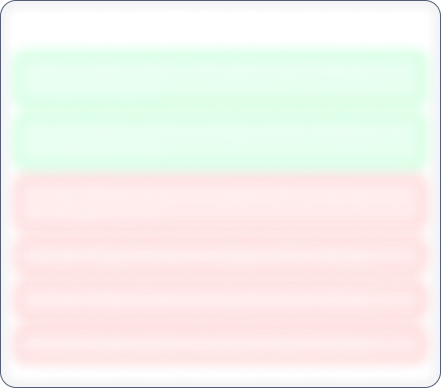Month End Sale 60% off
Lehar Footwears

No Data Available
Investor Sentiment
Lehar Footwears Share price and Fundamental Analysis
Key Metrics
Included In
Stock Returns
Stock Heatmap

No Stocks
Smart Score

Unlock Smart Score
See Detailed Analysis & Insights


Unlock Insights
See Detailed Analysis & Insights
Technicals
Returns Calculator
If you would have investedResearch Report
No Research Report
Corporate Action
Financials
Key Ratios
ROE
Avg ROE (3 Yrs) : NaN%
ROCE
Avg ROCE (3 Yrs) : NaN%
ROA
Avg ROA (3 Yrs) : NaN%
NPM
Avg NPM (3 Yrs) : NaN%
Dividend History
5 Year FactSheet
Documents

No Data Available
News
Lehar Footwears Management and History
Company Management


Unlock Management Data
See Detailed Analysis & Insights
Company History
The company was incorporated as a Private Limited Company in the year 1994 with the object of manufacturing of canvas shoes, lightweight hawai chappals & EVA Injection footwear. The status and name of the company was changed to public limited company Lawreshwar Polymers Limited w.e.f. 27.05.1996. The Company is promoted by Shri Raj Kumar Agarwal alongwith Shri Mohan Lal Agarwal and Shri Naresh Agarwal. The Company commenced its production on 11th May 1995 with an installed capacity of 45 Lac pairs per annum and within a span of one year it had been successful in achieving envisaged results and able to establish an effective sales network in Rajasthan as well as other states. The Company has successfully established its brand name 'LEHAR' in the market within a very short period. At present the Company is having an annual installed capacity of 75 Lac pairs of Hawai Chappals, 12 Lac pairs of Canvas shoes and 9.87 Lac pairs of EVA Injected footwear. The Company manufactures a variety of footwear like light weight fancy slippers, PVC and TPR footwear, synthetic leather chappals in addition to Hawai Chappals and canvas shoes. The Company is proposing to diversify its product line by manufacturing of PU Sole Footwear and intend to expand the present EVA manufacturing facilities.
February 2007, the company has entered into capital market. The company has issued 87,12,500 Equity shares to the public. Issue price is Rs.16/- per share.
Lehar Footwears Share Price
Lehar Footwears share price reflects investor sentiment toward the company and is impacted by various factors such as financial performance, market trends, and economic conditions. Share price is an indicator which shows the current value of the company's shares at which buyers or sellers can transact.
Lehar Footwears Market Cap
Market capitalization of Lehar Footwears indicates the total value of its outstanding shares. Marketcap is calculated by multiplying share price and outstanding shares of the company. It is a helpful metric for assessing the company's size and market Valuation. It also helps investors understand how Lehar Footwears is valued compared to its competitors.
Lehar Footwears PE Ratio
Lehar Footwears PE ratio helps investors understand what is the market value of each stock compared to Lehar Footwears 's earnings. A PE ratio higher than the average industry PE could indicate an overvaluation of the stock, whereas a lower PE compared to the average industry PE could indicate an undervaluation.
Lehar Footwears PEG Ratio
The PEG ratio of Lehar Footwears evaluates its PE ratio in relation to its growth rate. A PEG ratio of 1 indicates a fair value, a PEG ratio of less than 1 indicates undervaluation, and a PEG ratio of more than 1 indicates overvaluation.
Lehar Footwears ROE (Return on Equity)
Return on Equity (ROE) measures how effectively Lehar Footwears generates profit from shareholders' equity. A higher ROE of more than 20% indicates better financial performance in terms of profitability.
Lehar Footwears ROCE (Return on Capital Employed)
Return on Capital Employed (ROCE) evaluates the profitability of Lehar Footwears in relation to its capital employed. In simple terms, ROCE provides insight to investors as to how well the company is utilizing the capital deployed. A high ROCE of more than 20% shows that the business is making profitable use of its capital.
Lehar Footwears Total Debt
Total debt of Lehar Footwears shows how much the company owes to either banks or individual creditors. In simple terms, this is the amount the company has to repay. Total debt can be a very useful metric to show the financial health of the company. Total debt more than equity is considered to be a bad sign.
Lehar Footwears Debt to Equity Ratio
The Debt-to-Equity (DE) ratio of Lehar Footwears compares its total debt to shareholders' equity. A higher Debt to Equity ratio could indicate higher financial risk, while a lower ratio suggests that the company is managing its debt efficiently.
Lehar Footwears CAGR (Compound Annual Growth Rate)
CAGR shows the consistent growth rate of Lehar Footwears over a specific period, whether it is over a month, a year, or 10 years. It is a key metric to evaluate the company’s long-term growth potential. Main metrics for which CAGR is calculated are net sales, net profit, operating profit, and stock returns.
Lehar Footwears Technical Analysis
Technical analysis of Lehar Footwears helps investors get an insight into when they can enter or exit the stock. Key components of Lehar Footwears Technical Analysis include:
Support Levels (S1, S2, S3)
There are usually multiple support levels, but the main support levels for a stock are S1, S2, S3. Support levels indicate price points where stock might get support from buyers, helping the stock stop falling and rise.
Resistance Levels (R1, R2, R3)
There are usually multiple resistance levels, but the main resistance levels for a stock are R1, R2, R3. Resistance levels represent price points where Lehar Footwears shares often struggle to rise above due to selling pressure.
Lehar Footwears Dividends
Dividends refer to the portion of the company’s profits distributed to its shareholders. Dividends are typically paid out in cash and reflect Lehar Footwears ’s financial health and profitability.
Lehar Footwears Bonus Shares
Bonus shares are usually given by companies to make the stock more affordable, increase liquidity, boost investor confidence, and more.
Lehar Footwears Stock Split
Stock split increases the number of its outstanding shares by dividing each existing share into multiple shares. When the company offers a stock split, the face value of the stock reduces in the same proportion as the split ratio.
Lehar Footwears Financials
The financials of Lehar Footwears provide a complete view to investors about its net sales, net profit, operating profits, expenses, and overall financial health. Investors can analyze financial data to assess the company’s stability and also understand how the company has been growing financially.
Lehar Footwears Profit and Loss Statements
The profit and loss statement of Lehar Footwears highlights its net sales, net profit, total expenditure, and operating profits in the current financial year. This Profit and Loss statement is crucial for evaluating the profitability and financial stability of Lehar Footwears .
Lehar Footwears Balance Sheet
The balance sheet presents a snapshot of Lehar Footwears ’s assets, liabilities, and equity of shareholders, providing insights into the financials of the company.
Lehar Footwears Cashflow Statements
Cashflow statements track the company's cash inflows and outflows over a period. It is an essential tool for understanding how well the company manages its liquidity and finances.


